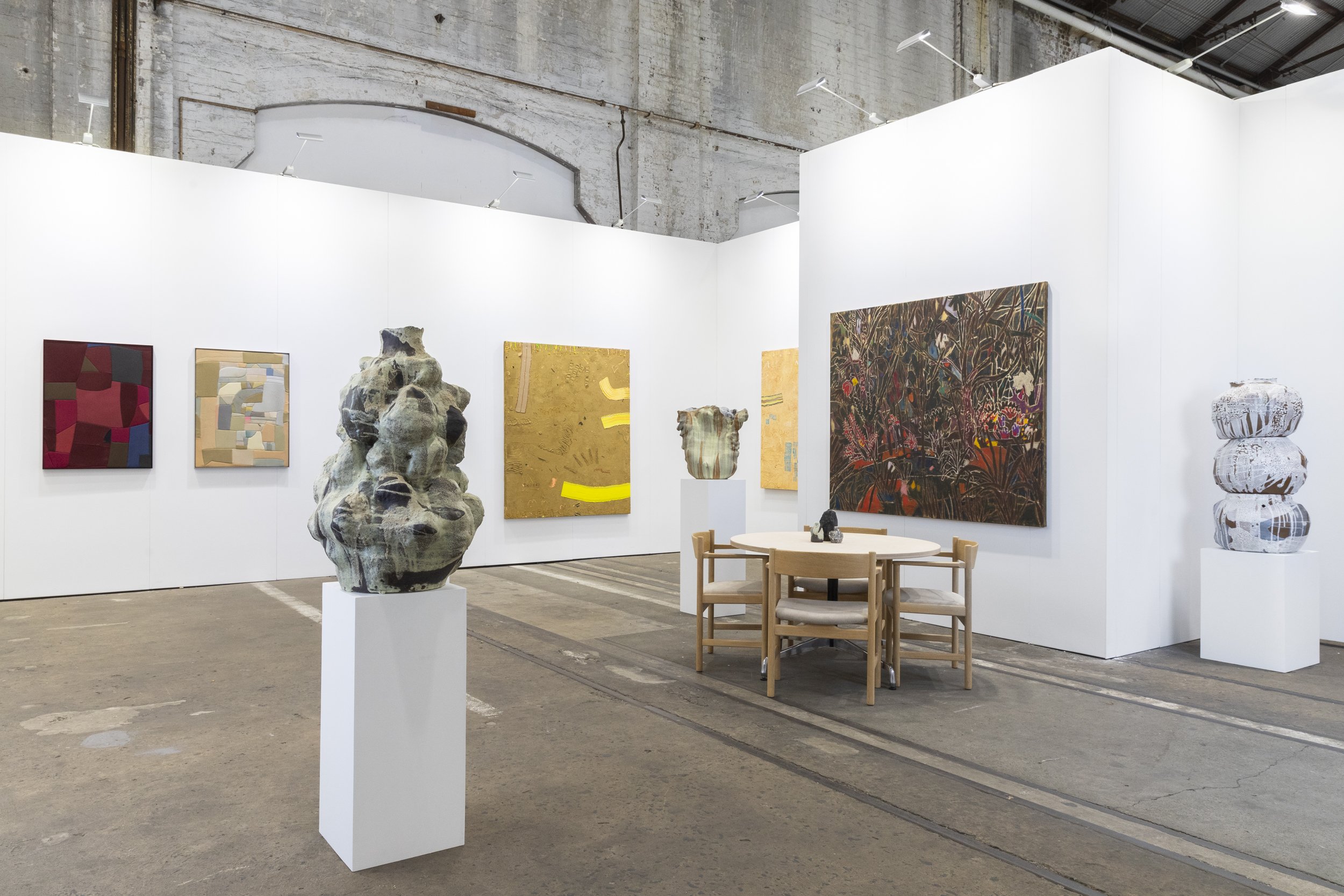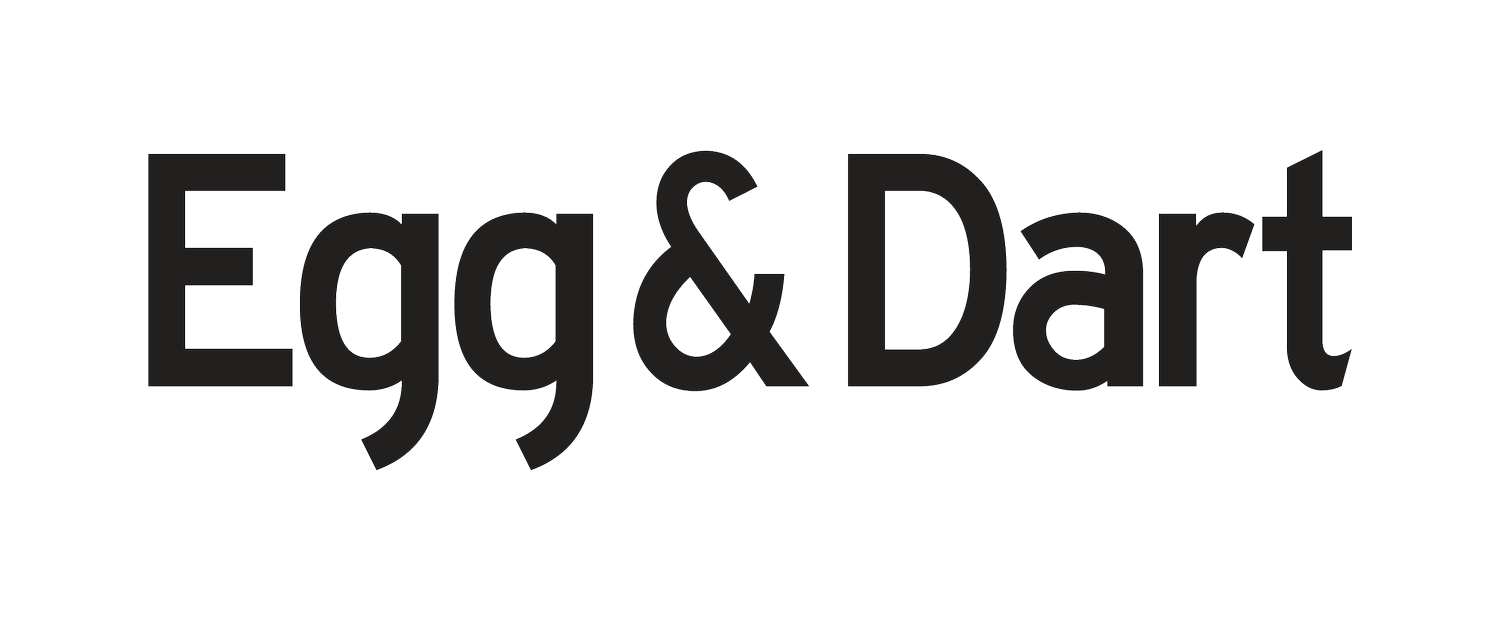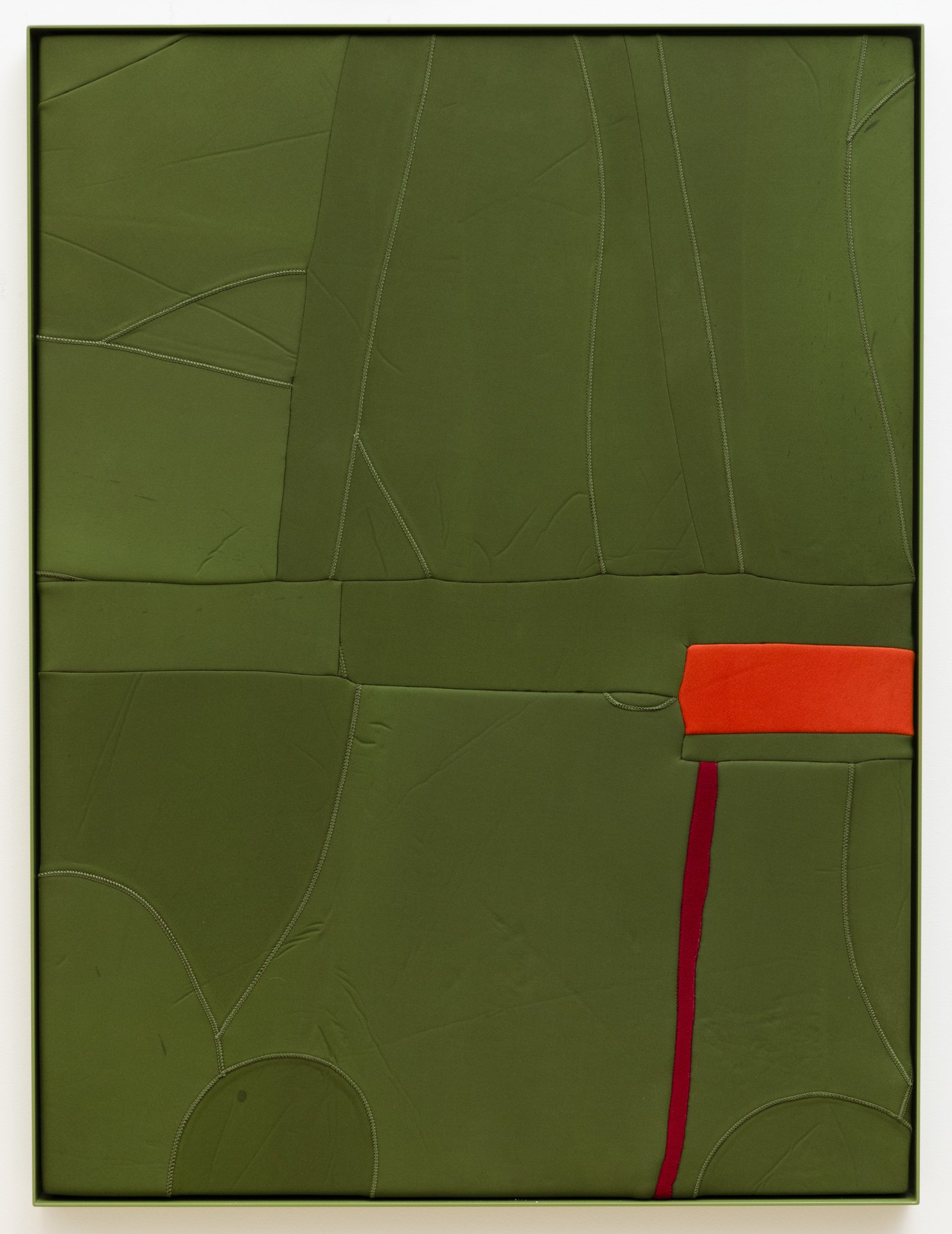
Sydney Contemporary 2024
Hannah Barclay, Sean Crowley, Aaron Fell-Fracasso and Henry Jock Walker
5 - 8 September
Hannah Barclay
b.1990
Lives and works in Scarborough/Dharawal, NSW, Australia
Hannah Barclay employs an active and generative process to make ceramic forms of boundless physicality. The pieces for Sydney Contemporary show the artist exploring stacked components and large composite structures. Each piece blends traditional and contemporary ceramic methods in stoneware and glaze with finishes that contribute glossy, sandy, crackling and fluid textures.
Barclay's approach integrates wheel-throwing and hand-building techniques where a proportional form is established on the wheel and then hand-manipulated into corporeal shapes. The work is a record of physical adjustments and body movement, forming the tactile and emotional core of the work.
Process art sensibilities are present, where concepts of change and transience through making are crucial to the outcome. Barclay likens this process to intuitive drawing, where the hand's motion is crucial, and the direction of the work is a spontaneous response to the previous day's outcomes. Forces of gravity are applied to essential forms like vessels and arches. We feel these as operative actions like slump, lean, melt and fold but also heap, support and bind, suggesting the capacity for a form to alter and prevail.
Hannah Barclay owns and operates a ceramics studio on Dharawal land, on the New South Wales south coast, where she also conducts and mentors a ceramics residency. Current projects include a large benchtop commission for a new bar opening in Sydney. Barclay is a graduate of the National Art School, Sydney. The works prepared for Sydney Contemporary represent an evolution from those created for the artist’s solo exhibition Gone Is The Night, held earlier this year.
Sean Crowley
b. 1990
Lives and works in Sydney/Gadigal, NSW, Australia
Sean Crowley’s recent works are made almost entirely on-site in the gardens of friends and family. The works are ablaze with colour that can integrate but also compress space, dropping a filter over the scene. There is a palpable sense of motion, whether shifting position in a fold-up chair or traversing a path. Crowley is interested in how movements in position can lead to adjustments within one work and how this impacts the drawing as a record. “That process of looking is both a very grounding component, but also, that’s where I find my challenges, where I find the discoveries are made, and where variation comes between the different compositions.”
Crowley confirms, “Drawing is definitely where I come from,” a sentiment reinforced by his recent period at the Royal School of Drawing in London. Working at scale on canvas, the oil stick is resilient and responsive while maintaining its capacity as a drawing tool – offering a through-line from the artist’s earlier pastel works. The interplay of planting, structure and movement in a garden also responds to the layering capacity of the drawing material. Crowley uses the oil stick to make gestural marks that can ascend into patterns and mark out edges but then pushes the material back, like oil paint, to be erased or smudged into another hue.
The work has been described as expanding beyond the frame. Sean Crowley notes, “Someone said they are a bit like textiles. Maybe that’s connected to just thinking about the physical presence of paintings. I like the idea that they allude to a space but also have a physical presence.” A private garden is similarly a contained arena that pushes outward. Vegetation creeps beyond fence lines, trees cast shadows, and wind chimes are heard beyond the walls.
Sean Crowley’s approach to space speaks to his prior experiences as an architect. He studied and practised in architecture and urban design for a time before gaining a Bachelor of Fine Arts and a Graduate Diploma at the National Art School in Sydney. He speaks of cornerstones of spatial design. “You have a wall that is flat, a door that is a hole or an aperture, then layer on the human elements.” In describing this, he touches on something active and exciting that working on-site offers. These core spatial concerns – where we are in relation and among things – are vital to navigating Sean Crowley‘s complex works.

Aaron Fell-Fracasso
b. 1978
Lives and works in Wollongong/Dharawal, NSW, Australia
For some time Aaron Fell-Fracasso has been painting with tools more commonly associated with construction – palette scrapers, wedges or extruders. These tools were the most practical way to make instinctive marks, and what also emerged were performative parallels with earlier experiences working in construction. Across multiple paintings, marks sit atop the prepared surface like gestural “worms” dragged in from the edges. If we get close to the surface, there is a density of activity –scrawling, redefining and erasing, with maybe a smudge to start over. Matter peels over the edge of the canvas. Other eccentric moves repeat or inscribe into the paint like a child practising a heart shape. Gyprock mesh is evident through skeins of oil paint mixed with sand, further evidence of adjustment and improvisation.
This studio process has allowed even earlier core memories to emerge in the most recent paintings, particularly those connected to sensation and texture. These can be vivid memories of a relative’s perfume or the feeling of small hands digging into sand to find clay on a protected beach. At times, the artist is so transported by the memory while working that he describes a puzzlement on reflection, that a painting seems to have made its own path.
I ❤️ When She Went Through Her Love Heart Stage, 2024
oil, sand, acrylic and fibreglass on linen
181 x 151 cm
AUD 12,750
Iron Algae Bubblegum In The Drain, 2024
oil, sand and acrylic on linen
181 x 151 cm
AUD 12,750
Henry Jock Walker
b.1986
Lives and works in Adelaide/Kaurna, SA, Australia
Henry Jock Walker continues to expand his use of stretched neoprene as a driver for abstraction through textural richness and wild colour synthesis. Walker collects used neoprene from wetsuits, and his studio is then a place to colour grade and arrange the pieces. There is the appeal of re-use but, more significantly, an embodiment captured by Walker’s work. As a wetsuit material, the weathering and marking of the surfaces retain a physical memory. The various ocean practices suggested by the material reflect the artist’s aligned performance practice, where surfing has been used as a creative connector.
Time-bleached gradients and incidental markings inform how a piece proceeds. Some works show the original stitching inverted or combined with a precise blanket stitch for further effects. Walker’s abstraction leans into landscape references and figurative suggestions, but the colour dynamics remain rich with abstract possibilities. The works are supported by powder-coated aluminium frames that further the connections beyond painting into design manufacture. A sequence of recent work stretches over organic edges that suggest an ocean swell brought into line by precisely curved frames.
Walker’s practice is scalable, making unique links between the commercial material and the possibilities for abstraction. A significant recent installation, “Floater” (2024), used the neoprene in shades of black (and then colour) that was stretched over both sides of a four-metre-long wall. The consistent texture of the material and the precise construction allow smaller pieces to combine as larger wall works. It signposted a remarkable expansion of the artist’s work in terms of both precision and material play.
Henry Jock Walker is an interdisciplinary artist based in Kaurna Country (Adelaide region, South Australia). Walker's approach is highly responsive to the specifics of place and the resources available, encouraging creative interactions that are experimental, process-driven and collaborative. In the past year, the artist has shown at Spring 1883 Melbourne and Foster/White, Seattle. The artist was awarded an Australia Council Travel Grant in 2018. Other recent exhibitions include shows in Seattle, Washington (2022) and work in the Adelaide Railway Station for the Adelaide Festival (2022).
Neoprene Flagship, 2024
stretched found neoprene with powder-coated aluminium frame
180 x 130 x 4 cm (framed)
AUD 9,900
Seamstream, 2024
stretched found neoprene with powder-coated aluminium frame
102 x 77 x 4 cm (framed)
AUD 3,250
Highgate Chicken, Mr Clip And Purple Foot Yoga, 2024
stretched found neoprene with powder-coated aluminium frame
102 x 77 x 4 cm (framed)
AUD 3,250
Brown, 2024
stretched found neoprene with powder-coated aluminium frame
50 x 40 x 4 cm (framed)
AUD 1,550
Lemsun, 2024
stretched found neoprene with powder-coated aluminium frame
102 x 77 x 4 cm (framed)
AUD 3,250
Jetty Jump, 2024
stretched found neoprene with powder-coated aluminium frame
102 x 77 x 4 cm (framed)
SOLD
Grey And Cream Dream, 2024
stretched found neoprene with powder-coated aluminium frame
102 x 77 x 4 cm (framed)
SOLD
Cream Contour Cut 302, 2024
stretched found neoprene with powder-coated aluminium frame
50 x 40 x 4 cm (framed)
AUD 1,550


















